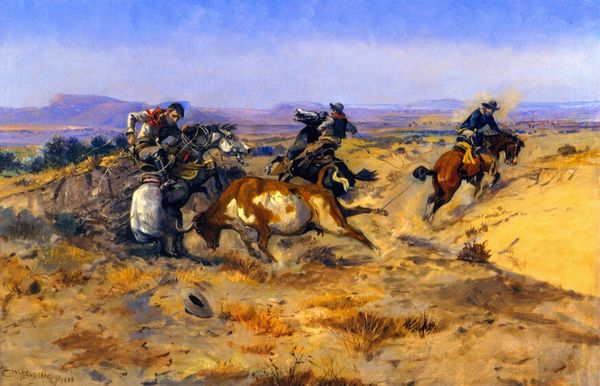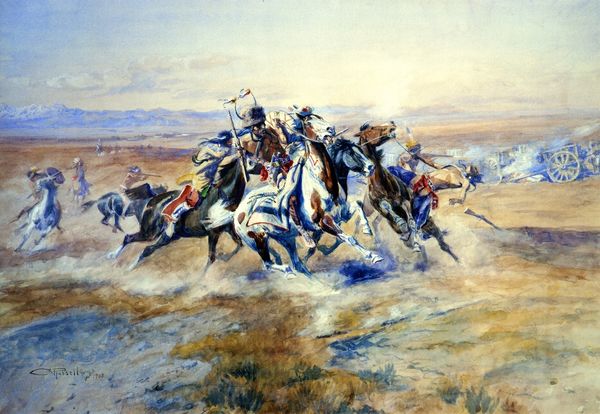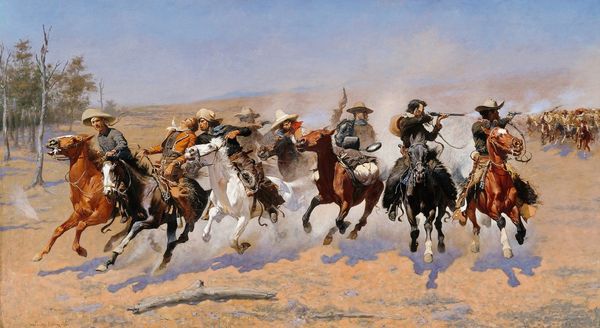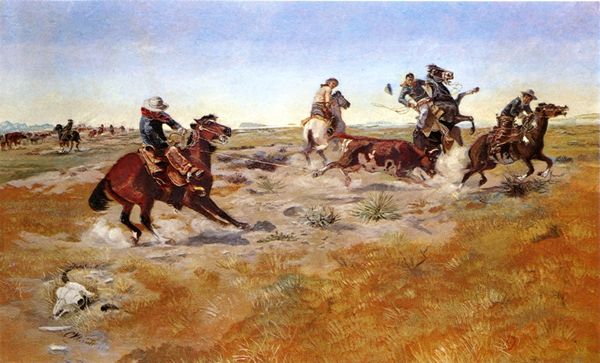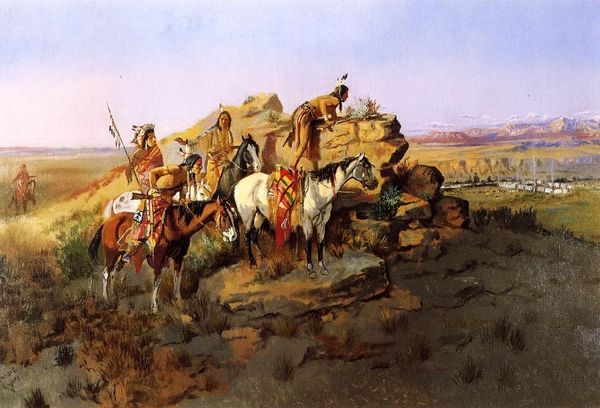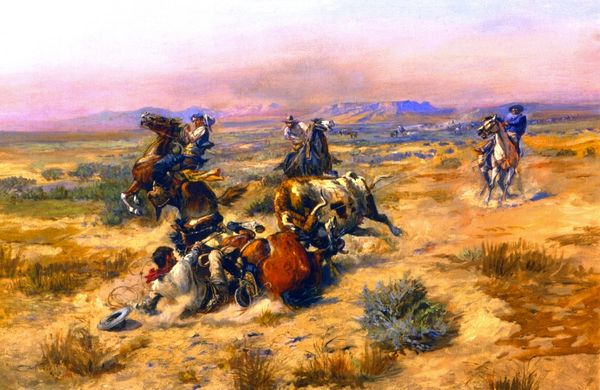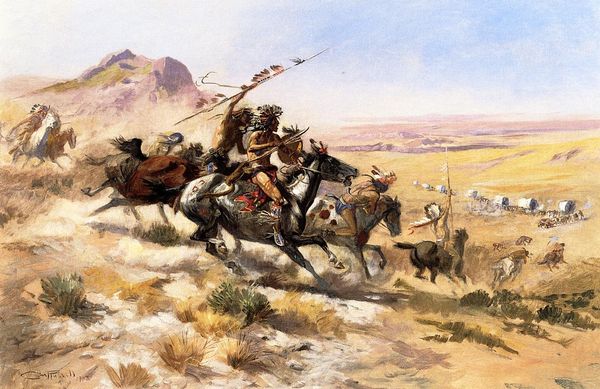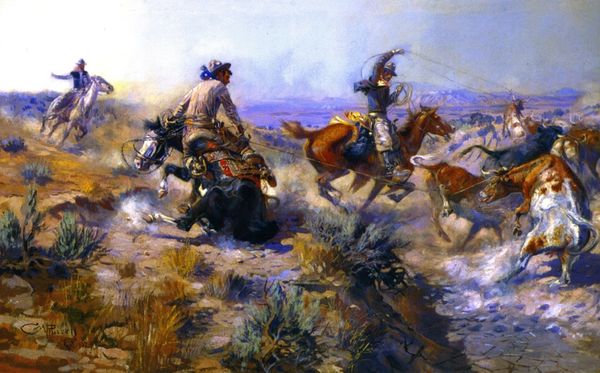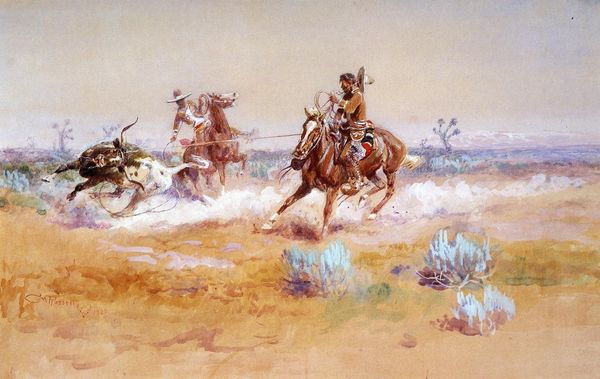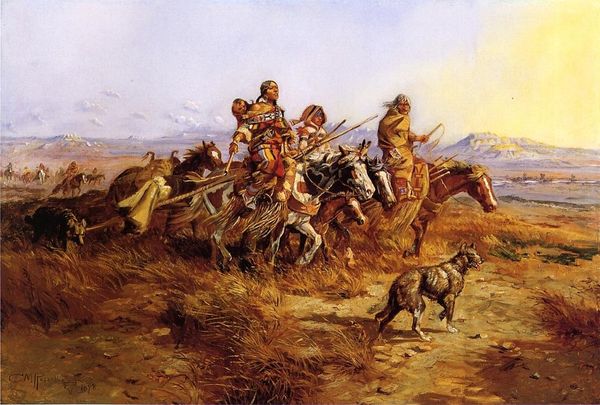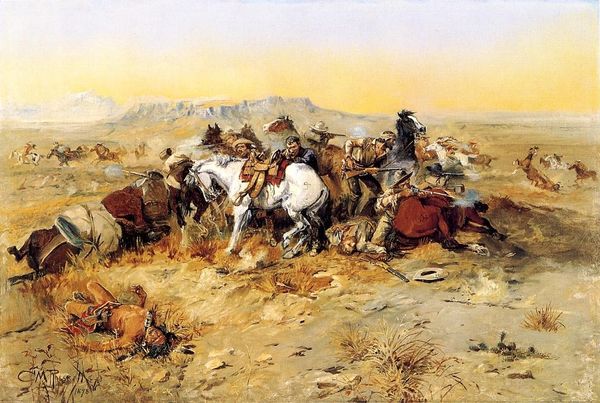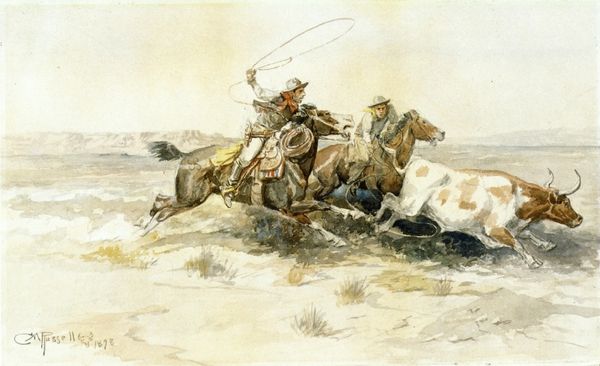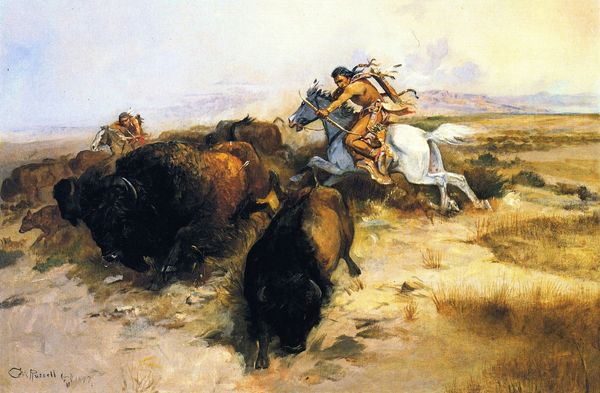
painting, oil-paint
#
narrative-art
#
painting
#
oil-paint
#
landscape
#
oil painting
#
horse
#
genre-painting
#
realism
Copyright: Public domain
Charles M. Russell made this painting titled "The Herd Quitter", a dynamic scene with cowboys chasing cattle, around 1897. This image embodies the mythology of the American West, but it’s also rooted in specific economic and social conditions. The late 19th century was a period of westward expansion and the rise of cattle ranching as a major industry. Ranching wasn’t just a job, it was a whole way of life that emphasized rugged individualism, self-reliance, and conquest over the landscape. Russell's painting taps into these cultural narratives, presenting an action-packed scene where men and animals are caught in a struggle. The cowboys represent the idealized vision of American masculinity, while the cattle drive itself stands as a symbol for economic progress. But, through the historian’s lens, we can see that this image also raises questions about land use, environmental impact, and labor relations. By researching documents from the period such as ranching records, newspapers, and personal letters, we gain a more nuanced understanding of the social conditions that shaped the production and reception of Russell's art.
Comments
No comments
Be the first to comment and join the conversation on the ultimate creative platform.
